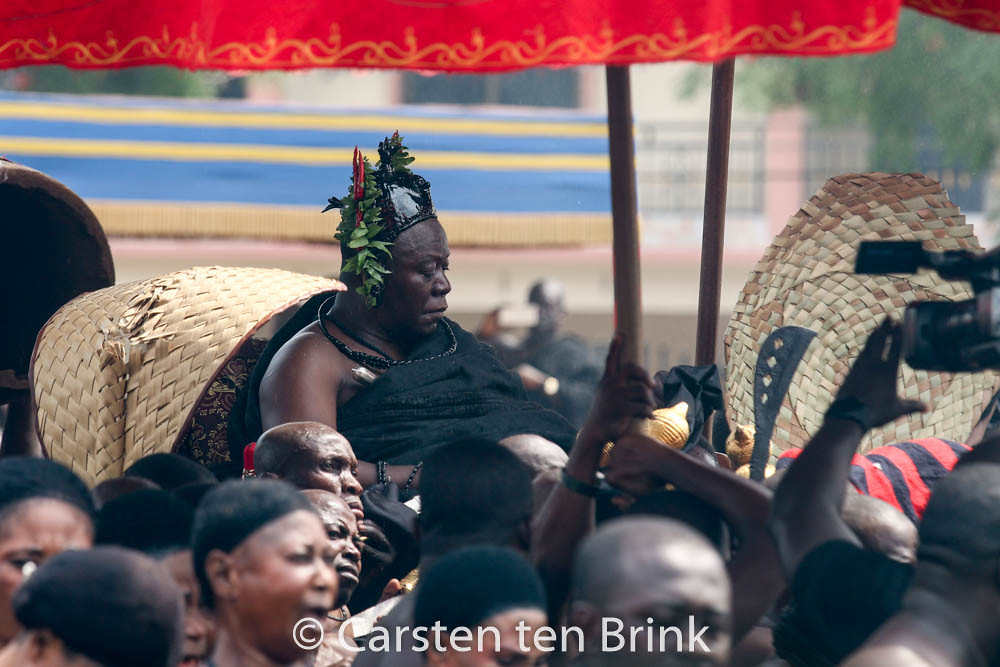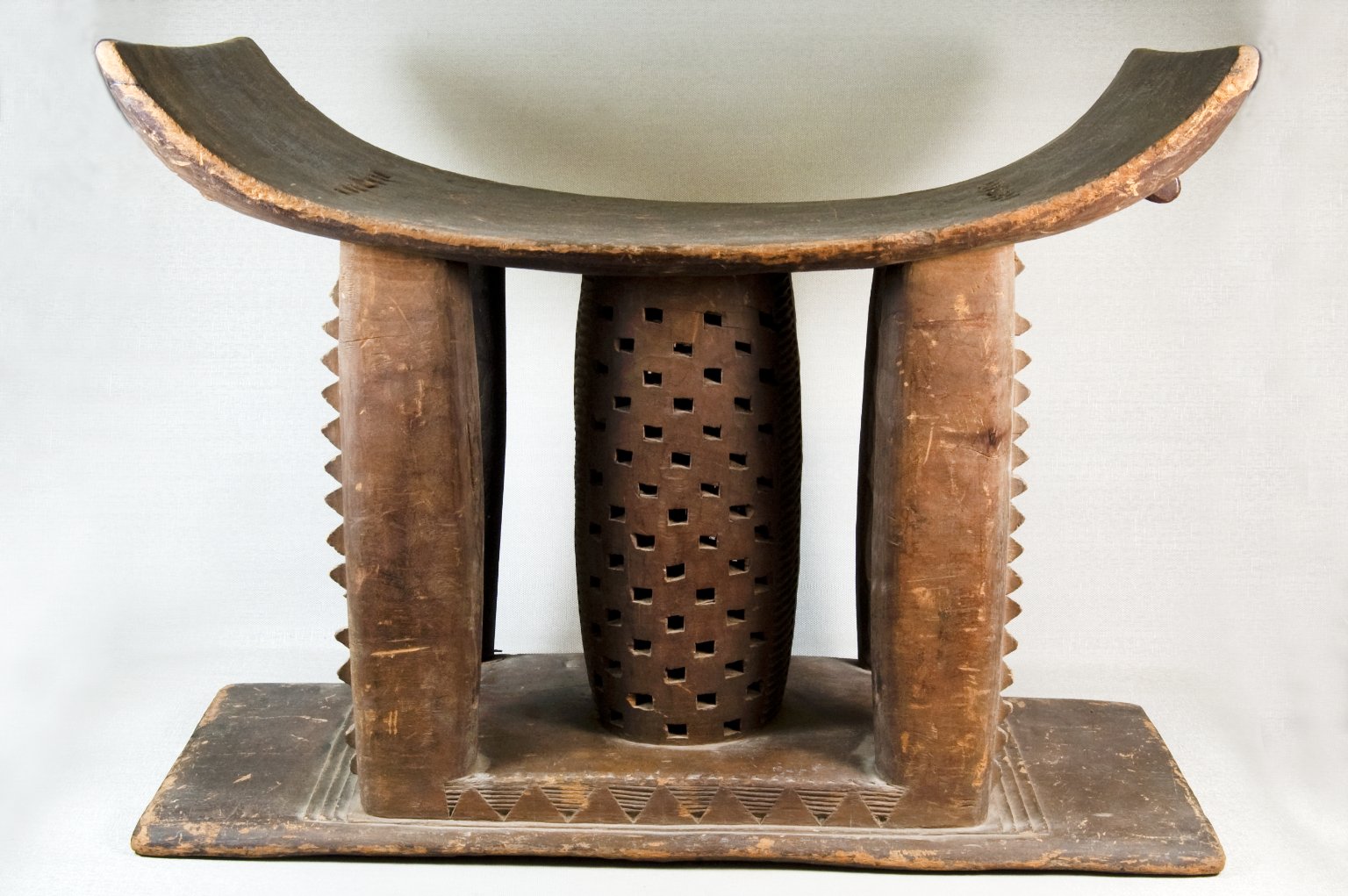History of the Asante Kingdom in Ghana

The Asante Kingdom was founded by the Ashanti king Osei Tutu and his advisor Okomfo Anokye in the latter half of the 17th century, with the Golden Stool of Asante serving as its sole emblem.
Osei Tutu supervised a significant expansion of Ashanti territory, strengthening the armed forces by establishing new formations and transforming a well-trained royal and paramilitary army into a potent combat force.
History of the Asante Kingdom in Ghana
The illustrious King Osei Tutu established the Asante kingdom in the eighteenth century.
Okomfo Anokye, his fetish priest, brought the Asante kingdoms together by pledging fealty to the Golden Stool, which had mysteriously descended from heaven.
Two trees were planted in the forest by Okomfo Anokye, who foretold that only one would survive and become the capital of Ashanti.
As a result, the tree took on the name Kumasi, while the area where the other tree was placed was given the name Kumawu (the tree died).
In the middle of the 17th century, the Oyoko under Chief Oti Akenten began uniting the Ashanti clans into a loose confederation in opposition to the Denkyira, and the Ashanti eventually became tributary of another Akan kingdom, Denkyira.
Under Osei Tutu, the creation of the Golden Stool served as an instrument for centralization. In accordance with folklore, a gathering of every clan leader from every Ashanti village was summoned right before they proclaimed their independence from Denkyira.
Okomfo Anokye, chief priest or wise advisor to Asantehene Osei Tutu I, commanded the Golden Stool to descend from the heavens during this meeting, and it floated down into Osei Tutu’s lap.
Okomfo Anokye declared the stool to be symbolic of the new Asante Union (the Ashanti Kingdom), and allegiance was sworn to the stool and Osei Tutu as the Asante.
The newly formed Ashanti union then went to war with Denkyira and won. As it is thought to hold the Ashanti people’s spirit or soul, the stool is still revered by the Ashanti.

Also Read: Mali Empire – The Rise and Downfall of the Malian Empire
Asante and Europeans
After the Ashanti army overran Denkyira in 1701, they gained access to trade with white Europeans, particularly the Dutch, along the coasts of the Atlantic Ocean and the Gulf of Guinea.
By using military might and political cunning, Asante control was expanded into the arid savannah territories to the north as well as the European-occupied castles on the coast to the south. Multiple conflicts with Britain resulted from this.
In the first two of the four Anglo-Ashanti Wars, the Ashanti expelled the British Empire, murdering British army leader Sir Charles MacCarthy and preserving his skull as a drinking cup in 1824.
Later, Kumasi, the capital of Ashanti, was burned and looted by British soldiers. In 1873, the British Army took Kumasi.
After the last insurrection in 1901, commanded by the Queen Mother of Ejisu (Yaa Asantewaa), Asante was vanquished in the fifth Anglo-Ashanti War, fell under British Protection, and on January 1, 1902, it was officially incorporated into the Gold Coast province.
Asante Golden Stool

The Ashanti people’s regal and heavenly seat, known as the Golden Stool, is considered the pinnacle of authority in Asante.
The Golden Stool is said to hold the spirit[3] of the Asante nation—living, dead, and yet to be born, according to legend.
It is said that Okomfo Anokye, High Priest and one of the two main founders of the Asante Confederacy, caused the stool to fall from the sky and land on the lap of the first Asante king, Osei Tutu.
The gold Stool is 24 inches long, 12 inches broad, and stands 18 inches tall. It was so precious that no one was permitted to sit on it, and it was never allowed to touch the ground.
Over the Golden Stool, every new Ashante monarch descends and ascends without touching it.
Without the Golden Stool, which often sat on its own throne next to the Asantehene, no one could be regarded as a legitimate king.
Also Read: The Dogon Tribe Of Africa
What made the Asante Kingdom powerful and factors that led to the rise of asante kingdom
The Asante tribes became kingdoms as they expanded in number and strength.
Osel Tutu unified all the kingdoms in 1670, and in 1696 he has crowned Asantehene, or monarch, of the Ashanti Empire.
Tutu is recognized as an accomplished diplomat, and in 1700, he quickly secured a number of partnerships to form the Asante Union.
Additionally, he constructed Kumasi, which is still a significant metropolis in contemporary Ghana.
The Ashanti controlled the biggest and most powerful state on the Guinea Coast within fifty years. They possessed two significant sources of wealth.
The entrance to extremely productive gold mines was first restricted. The area was so rich in gold that Europeans simply referred to it as the “Gold Coast.”
Additionally, they operated an incredibly successful slave trade. Many Ashanti were able to specialize in crafts because of their affluence, and their woodcarvings and fabrics are well known for their beauty.
The Golden Stool provided the Asantehene with his claim to legitimacy. The Golden Stool, which serves as the Asantehene’s throne, is believed by the Ashanti people to have descended from heaven.
This demonstrates that the monarch is in the gods’ favor.
Political Organization of Asante Kingdom
Initially, the political structure of Asante was based on clans led by a supreme chief or Amanhene. One clan, the Oyoko, established a headquarters at Kumasi and moved into the subtropical forest of Ashanti.
What was the Asante kingdom known for and Economic organization of Asante kingdom?
The exchange of gold and slaves formed the foundation of the Ashanti Empire’s economy. The army was a useful weapon for capturing prisoners.
The Social Organization of Asante Kingdom
The matrilineage, a limited section of a clan whose members claim to descend from a common female ancestor, is the core of the Asante social order.
The lineage members help one another with tasks including home construction, farming, cleaning roads, and burial customs.
Importance of Odwira festival in Asante kingdom
Its importance is to commemorate their historic triumph over the unstoppable Asante army at the battle of Katamansu near Dodowa in 1826, as well as to purify themselves and beseech their gods for protection.
Who was the First King of the Asante kingdom
Despite being the fourth monarch to preside in Asante regal history, Nana Osei Tutu I is the first Ashanti king and ruled the kingdom from 1701 and 1717.
He succeeded his uncle Obiri Yeboah and established the foundations upon which the Ashanti dynasty would be established.
Kings of Asante kingdom
Osei Tutu (1680 tp 1717),
Opoku Ware I (1720-1750)
Kusi Obodum (1750-1764)
Osei Kwadwo (1764-1777
Osei Kwame (1777-1798)
Opoku Fofie (1798-1799)
Osei Bonsu (1800-1823)
Osei Yaw Akoto (1824-34)
Kwaku Dua I (1834 – 67)
Kofi Karikari (1867-74)
Mensah Bonsu (1874-1883)
Kwaku Dua II in 1884
Kwaku Duah II alias Agyeman Prempeh I from 1888 to 1931,
Osei Tutu Agyeman Prempeh II from 1931 to 1970
Otumfuo Opoku Ware II from 1970-1999.
Also Read: Shaka Zulu’ South Africa’s Greatest Army General
The Asante Tribe and Slavery
In order to become a significant supplier of Sub-Saharan slaves for both African and European consumers, the Ashanti Kingdom established a vast network of slave collectors and dealers.
Initially, the Mande and Hausa peoples and the Ashanti sold slaves to the north.
However, when more British, Dutch, and French customers arrived at the end of the eighteenth century, commerce shifted southward toward the shore.
The Caribbean was the final destination of many Ashanti slaves, and several features of Jamaican culture are influenced by Ashanti customs.
What led to the Asante Kingdoms’ demise?
Conflict erupted in the 1820s as a result of deteriorating commercial ties and disagreements over the Fante area over the following ten years of tension.
Ashanti kingdom facts
They used drums to talk to one another
A talking drum was a novel form of communication developed by the Asante Kingdom. The Asante would drum messages through the communities over distances of many kilometers.
The drums’ signals were used to broadcast announcements, provide danger alerts, and schedule gatherings.
Their handshake is unique
A unique handshake is used by the Asante. To shake hands, they extend their left hand. They think that the left-hand holds the shield and the right hand holds the spears, so they act accordingly.
So you lower your shield to demonstrate your trust in someone. The left hand is now free.
They own a Scared Golden Stool
The Ashanti people consider the Golden Stool to be their holy emblem, representing their soul. The first Asante ruler, Osei Tutu, is said to have received the Golden Stool when it fell from heaven in a cloud of white dust.
The protection of the Golden Stool, according to the king’s priest, would determine the Asante people’s future power and togetherness.
The Stool measures 18 inches in height, 24 inches in length, and 12 inches in width. It is constructed of gold. It was so precious that no one was permitted to sit on it, and it was never allowed to touch the ground.
Over the Golden Stool, every new Ashante monarch descends and ascends without touching it. Without the Golden Stool, no one could be regarded a legitimate monarch.
Also Read: Okomfo Anokye and The Golden Stool Ashanti
They Dress in Kente on Big Occasions
The Kente cloth is traditionally a festive garment used mostly during the joyous yearly and seasonal festivities.
Today, they are utilized not just for celebratory occasions but also during the rituals connected to life’s major milestones, such as marriage, death, and religious devotion.
They have unique names
In Ghana, parents view children as a gift from God. Therefore, the birth of a child is a highly happy and significant event in the life of the parents and the community.
Depending on the child’s gender and the day of the week that they were born, they are assigned a day name at birth.
They were quite wealthy
Asante was among the wealthiest of all the African kingdoms. The kingdom had several gold mines, which the rulers sold to Europeans for a healthy profit throughout the years.
The ivory trade also brought in a sizable profit for the monarchy. For instance, a male kid born on Saturday may be called Kwame, while a female infant might be called Ama.
Conclusion
In today’s union with the Republic of Ghana, the Asante Kingdom continues to exist as a sub-national traditional state that is protected by the constitution.
The only natural lake in Ghana, Lake Bosumtwi, is located in the Asante Kingdom. Current economic activity in the state is mostly supported by trade in gold bars, cocoa, kola nuts, and agricultural products.





